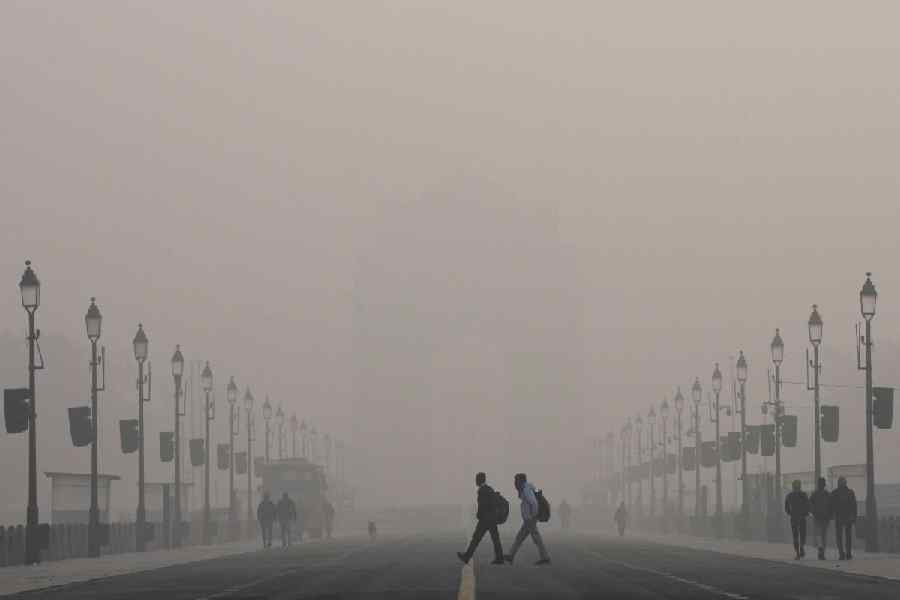A sudden flash of fire leaping out in search of oxygen when the lift door carrying the men from the ground floor opened at the fire-hit floor and abundance of carbon monoxide in the air is likely to have resulted in the death of the nine persons at New Koilaghat Building, a forensic scientist said on Tuesday.
The scientist The Telegraph spoke to spent several hours at the railways’ Strand Road office on Tuesday.
He said the fire on the 13th floor on Monday night, which later spread to the floor below, was in want of oxygen as it was consuming all that was available in the ambient air.
When a lift moves up it drags along with it a column of air, he said.
“When the lift opened it provided a fresh oxygen. As the door opened, flames gushed towards the oxygen source,” he said.
The victims were not charred to death. They were scorched, he pointed out.
“When a body is charred, there are cracks on the skin and yellowish fat below it is visible from outside. In case of scorching, patches of hair, eye brows get burnt and the face gets distorted following exposure to severe flow of heat and flames,” the scientist said.
“In case of scorching, parts of skin that are touched while removing the body may come off making it difficult to identify the victims at times.”
What possibly hastened the death for some was the presence of carbon monoxide on the air, the forensic scientist, who was a part of a team that visited the fire-hit building and spent over four hours collecting samples, including electrical wires, said. The team also spoke to police officers at the spot.
When fire strikes on top floors of a high-rise it rapidly starts consuming the oxygen available. As a result, a portion of an elevator’s shaft gradually starts getting filled with carbon monoxide.
While examining the floors, the forensic team found several items that were not completely burnt, including computers and plastic items. This suggests oxygen shortage and presence of carbon monoxide.
Preliminary post mortem reports suggest the victims had suffered cardiac arrest following severe dehydration due to burns. At least two victims had died of asphyxia, the report suggests.
“Carbon monoxide can result in asphyxial death, something that we had observed in case of the victims of the fire that broke out at AMRI Hospital in 2011,” the scientist said.











